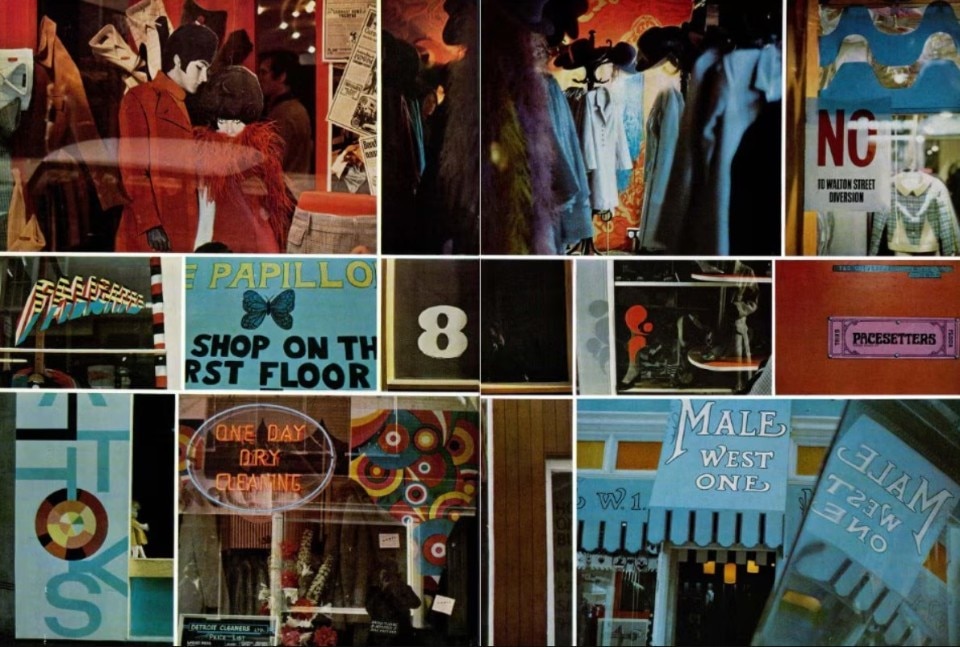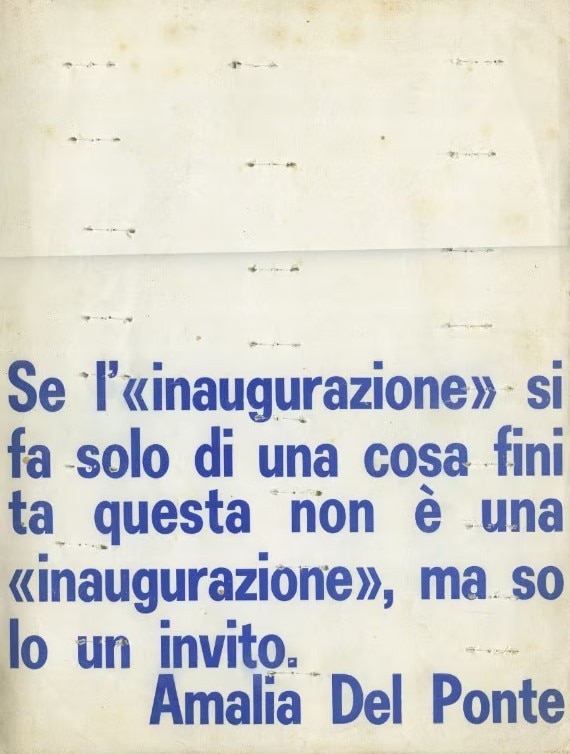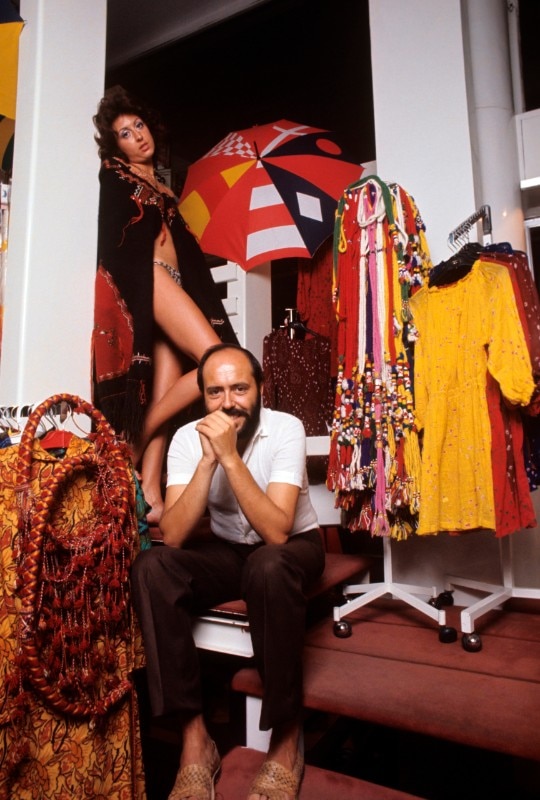In the 1960s, the world’s view of fashion changed irrevocably: from the looming sexual revolution to the youth protests that took over London, to the rise of street style and anti-fashion, everything shifted. This cultural movement culminated in what Diana Vreeland, then editor-in-chief of Vogue, famously called Youthquake (a fusion of “youth” and “earthquake”).
Between the kitschy, theatrical designs of Biba and the playful, comfortable creations of Mary Quant, Swinging London flourished. A new idea took root: fashion could – and maybe should – rise from the streets. This grassroots creativity, which fashion sociologists later dubbed “bubble up,” was seen as more authentic. Elio Fiorucci echoed this sentiment, stating that “fashion did not descend from on high like the Holy Spirit, but came up from the street,” driven by a whirlwind of cultural evolution.

Fiorucci was a standout figure in this new generation of designers – someone who truly understood the breaking of conventions and the changing tastes of the most influential demographic: the young.
Fiorucci had an extraordinary talent for spotting trends and transforming everyday items into coveted fashion pieces.

After a trip to England in the mid-1960s, Fiorucci returned to Italy, determined to make his mark. In 1967, he opened his first store in Milan’s Galleria Passerella, a space designed by Amalia Del Ponte and inaugurated by Adriano Celentano. But this was no ordinary store – it was a concept space, offering not just clothes and accessories but also gadgets, contemporary art, and records.

Fiorucci had an extraordinary talent for spotting trends and transforming everyday items into coveted fashion pieces. His instinctive ability to curate and reimagine fashion was ahead of its time, foreshadowing the role of today’s cool hunters. Gillo Dorfles, an art critic and philosopher, dubbed him the “Duchamp of Italian fashion” for his innovative approach. Fiorucci’s style was a perfect blend of hippie culture and Pop Art, embodying the provocative, unconventional spirit of 1960s London.
Fashion did not descend from on high like the Holy Spirit, but came up from the street.
Elio Fiorucci
In no time, Fiorucci became a fixture in Milan and beyond. His iconic logo – two cherubic angels, inspired by a Victorian postcard – became a pop art symbol. He cleverly turned T-shirts into canvases for any image, fabric, or slogan, framing them like works of art. Fiorucci didn’t just stop at tops; he revolutionized women’s jeans, making them daringly tight and form-fitting. With Oliviero Toscani’s provocative photography pushing boundaries, Fiorucci jeans quickly became an emblem of the era's unapologetic, bold sexuality. His brand’s mix of playful irreverence and cutting-edge style made him a defining voice of the times.

Fiorucci was an explosion of contemporaneity. Widely regarded as the forerunner of Italian fashion, his brand thrived for decades, expanding to London and New York and collaborating with cultural icons like Grace Jones and Andy Warhol.
In 2003, after selling his store to the Swedish giant H&M, Fiorucci reinvented himself once more, launching Love Therapy, a playful line of furniture, clothing, and accessories, with whimsical gnomes as the brand’s mascots.

In 2024, under the creative direction of Francesca Murri, the Fiorucci brand made a triumphant return to the Milanese fashion scene, debuting at Milan Fashion Week. Just two months later, the Triennale Milano will honor the designer with a biographical retrospective, narrated entirely in Fiorucci's own words. Curated by Judith Clark and set designed by Fabio Cherstich, the exhibition opens on November 6 and will run until March 16, 2025 thanks also to the main partner Fiorucci and the other partners Lavazza Group and Salone del Mobile Milano.
Opening image: The fashion designer and entrepreneur Elio Fiorucci posing in his shop in Galleria Passarella. In the background, the shop assistant Cristina Bagnoli posing wearing a sexy gown designed by the fashion designer. Milan, 1970. Photo Giuseppe Pino/Mondadori via Getty Images
- Exhibition:
- Elio Fiorucci
- Curated by:
- Judith Clark
- Location:
- Triennale Milano, Milan, Italy
- Dates:
- From 6th November 2024 to 16th March 2025

Cantori's timeless elegance becomes outdoor
With elegant lines and solid know-how, Cantori, a leader in furniture design, presents its first line dedicated to outdoor spaces.


